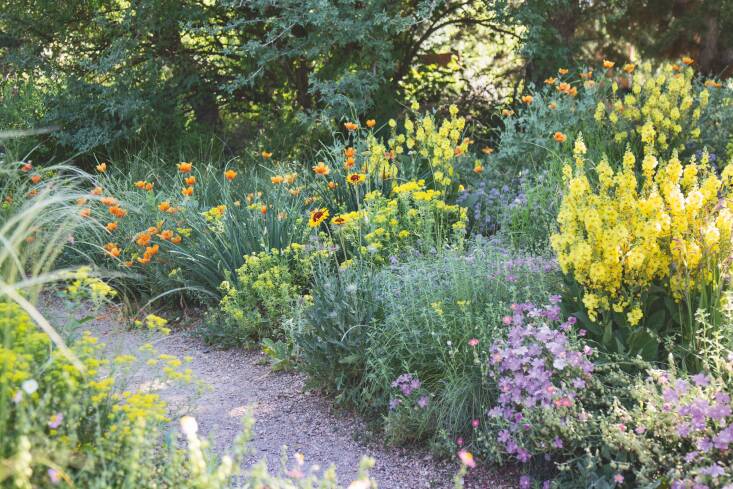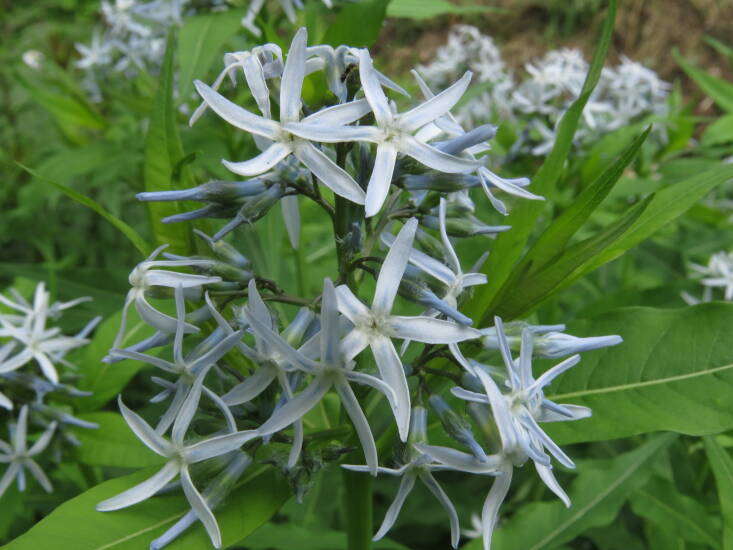A recent study of declining butterfly populations published in the journal Science made headlines across the country when it came out in March. The New York Times even launched an interactive tool so readers could see how butterflies had been impacted in their specific area. In the abstract of their findings the scientists concluded that “the prevalence of declines throughout all regions in the United States highlights an urgent need to protect butterflies from further losses.” So, what’s a gardener to do?
Plant caterpillar food, says Mary Anne Borge, the editor of Butterfly Gardener, a publication put out by the North American Butterfly Association for its members. When gardeners think about supporting butterflies, “we always think about providing nectar for butterflies for the adult butterflies,” says Borge. “And we think of other critters that might munch on the leaves of plants as pests. But butterflies are not butterflies through their whole lifecycle. They are caterpillars first. So if you really want to help butterflies, you really need to provide not just nectar for the adults, but you also have to provide food for the caterpillars.”
And it turns out, caterpillars are also very particular about what they can eat.
Above: A cloudless sulphur caterpillar on a wild senna. Photograph by Mary Anne Borge.
Butterflies strategically lay their eggs on particular plants, so that when their caterpillars hatch they will find themselves on a plant they can digest. The best known example of this host plant and caterpillar relationship is the milkweed-monarch connection (in part because monarchs are so distinctive and they have just one host plant), but there are hundreds of other caterpillar-plant relationships, for example, the zebra zwallowtail’s only host plant is the pawpaw tree (Asimina triloba). Some caterpillars like monarchs and zebra xwallowtails can only eat one plant, while others can happily feast on a dozen, but caterpillars can rarely eat ornamentals imported from abroad.
What you plant to feed your regional caterpillars will, therefore, depend on where you live. The National Wildlife Federation has a plant finder tool where you can plug in your zip code and search for butterflies and get a list of their host plants you might use in your garden. But Bolger also suggests gardeners keep an eye on plants slightly outside of their region, too. “I found it very interesting to actually look at the regional data from that report in Science. There’s some interesting trends that they hint at in the writeup for the study: Butterflies that historically have had a pretty decent population in the southern United States who are now increasing their numbers in the north,” says Bolder. “The only thing that enables that is having the caterpillar food plants that they need.”
When selecting plants for caterpillars, Bolger warns to be careful with cultivars. “If you change the leaf color, that means that you’re actually changing the chemical composition of those leaves, which may make them not digestible for the caterpillars.” She cites the example of a cultivar of ninebark called ‘Diablo’ that changes the leaf color from green to more of a reddish shade. “It’s highly unlikely then that those leaves will still be compatible with the digestive system of the spring Azure butterflies that use it as a host plant.”
If you want to support butterflies and caterpillars, you have another reason to tackle invasives in your yard. Bolger says that in some instances a foreign plant can fool a butterfly into thinking it is its native host plant. For example, the West Virginia white butterfly specializes on mustards and the adult butterfly females can be fooled into laying their eggs on the notoriously invasive garlic mustard (Alliaria petiolata). “But when the caterpillars hatch, they can’t adjust or thrive on that food,” says Bolger.
Here are a few butterflies and their host plants that Bolger, who is based in New Jersey, encourages gardeners to consider:
Sleepy Orange & Wild Senna
 Above: Wild Senna (Senna hebecarpa). Photograph by Mary Anne Borge.
Above: Wild Senna (Senna hebecarpa). Photograph by Mary Anne Borge.
An example of a butterfly-plant pairing that is slightly out of range for Bolger. As recently as 20 years ago, sleepy orange were thought not to be able to survive the winters further north than North Carolina. Because Bolger had planted wild senna at Bowman Hill Wildflower Preserve, where she volunteers, they began spotting sleepy orange.
Spiecebush Swallowtail & Common Spicebush
 Above: Photograph by Marie Viljoen, from Prickly Ash and Spicebush: Native Shrubs for your Spice Collection.
Above: Photograph by Marie Viljoen, from Prickly Ash and Spicebush: Native Shrubs for your Spice Collection.
The striking black spicebush swallowtail depends on, you guessed it: spicebush (Lindera benzoin), which is a native understory shrub. Butterflies are often named for their host plants. Bolger has spicebush plants in her own shade garden.
Black Swallowtails & Umbellifers
 Above: Photograph by Joshua Mayer, via Flickr, from Gardening 101: Golden Alexander.
Above: Photograph by Joshua Mayer, via Flickr, from Gardening 101: Golden Alexander.
The black swallowtail specializes in the Apiaceae family of aromatic flowering plants, but it’s not picky about whether those plants are native or not. It can eat golden Alexander, a native member of the umbellifer family, but they’ll also feed on cilantro, parsley, dill, fennel, Queen Ann’s lace, and other imported plants. “That’s more unusual that a butterfly caterpillar would eat plants that are not native; typically they need to be native,” notes Bolger.
Eastern Tiger Swallowtail & Wild Cherry
“Eastern tiger swallowtail uses several different trees as a caterpillar food, one of which is the ash tree, which you probably know have been going downhill because of the ash borer,” explains Bolger. Luckily, the eastern tiger swallowtail is not as picky as some butterflies. It can also use wild cherry trees (Prunus avium) as its host plant. “They have beautiful flowers typically in May,” Bolger notes.
Pipevine Swallowtail & Pipevine
 Above: Photograph by Anne McCormack via Flickr, from Ask the Experts: Landscape Designers Share 11 Native Vines to Try in Your Garden.
Above: Photograph by Anne McCormack via Flickr, from Ask the Experts: Landscape Designers Share 11 Native Vines to Try in Your Garden.
Another butterfly named for its host plant is the pipevine swallowtail, which is named after its Dutchman pipe (or pipevine), a native vine. Bolger notes you have to plant a good amount of it, so that there is enough that the butterflies can recognize it. “It’s a beautiful butterfly: It’s dark and has gorgeous blue on the lower parts of its wings,” Bolger notes.
Emperor Butterfly & Hacklelberry
Bolger notes that the native hackberry tree (Celtis occidentalis) hosts two large butterflies, the hackberry emperor and the tawny emperor, but it’s also a powerhouse host to more than 40 other species of butterflies and moths.
Zebra Swallowtail & Pawpaw
 Above: Photograph by Marie Viljoen, from Pawpaw: A Native Fruit that Tastes Like the Tropics.
Above: Photograph by Marie Viljoen, from Pawpaw: A Native Fruit that Tastes Like the Tropics.
The black and white striped zebra swallowtail’s only host plant is the Pawpaw tree, the northernmost member of the custard apple family, Annonaceae, which is also beloved by human foragers like our own Marie Viljoen.
See also:



